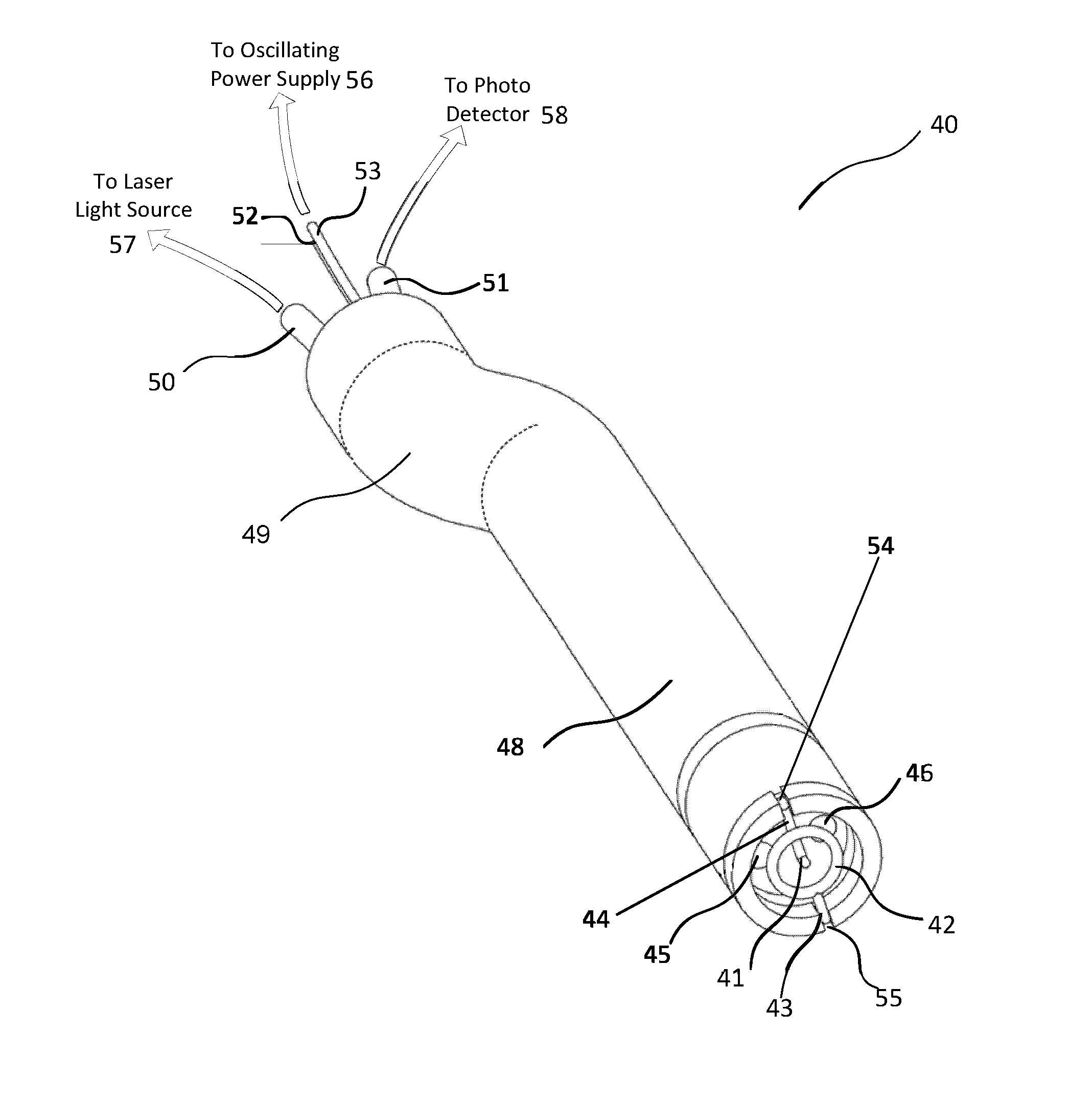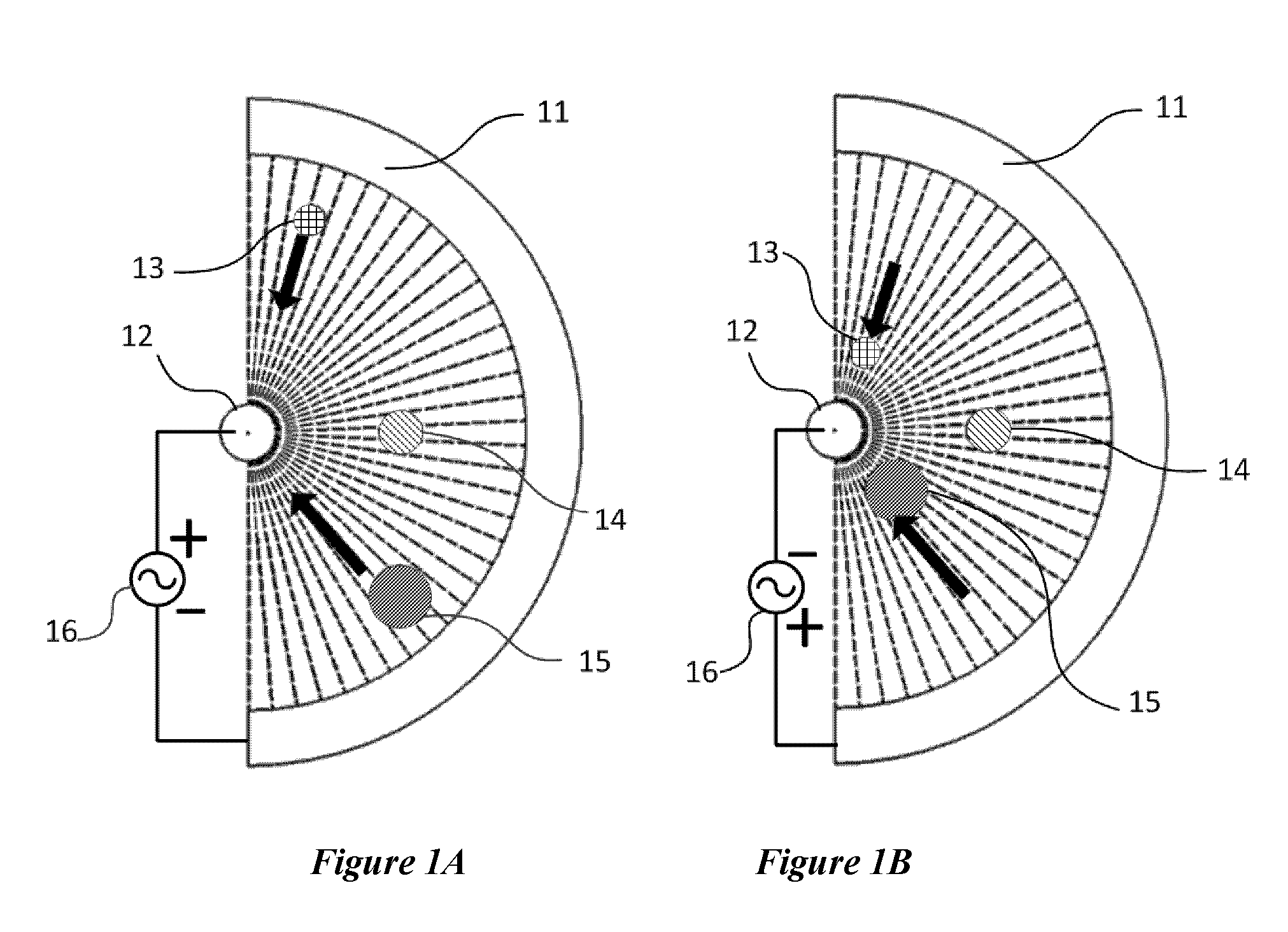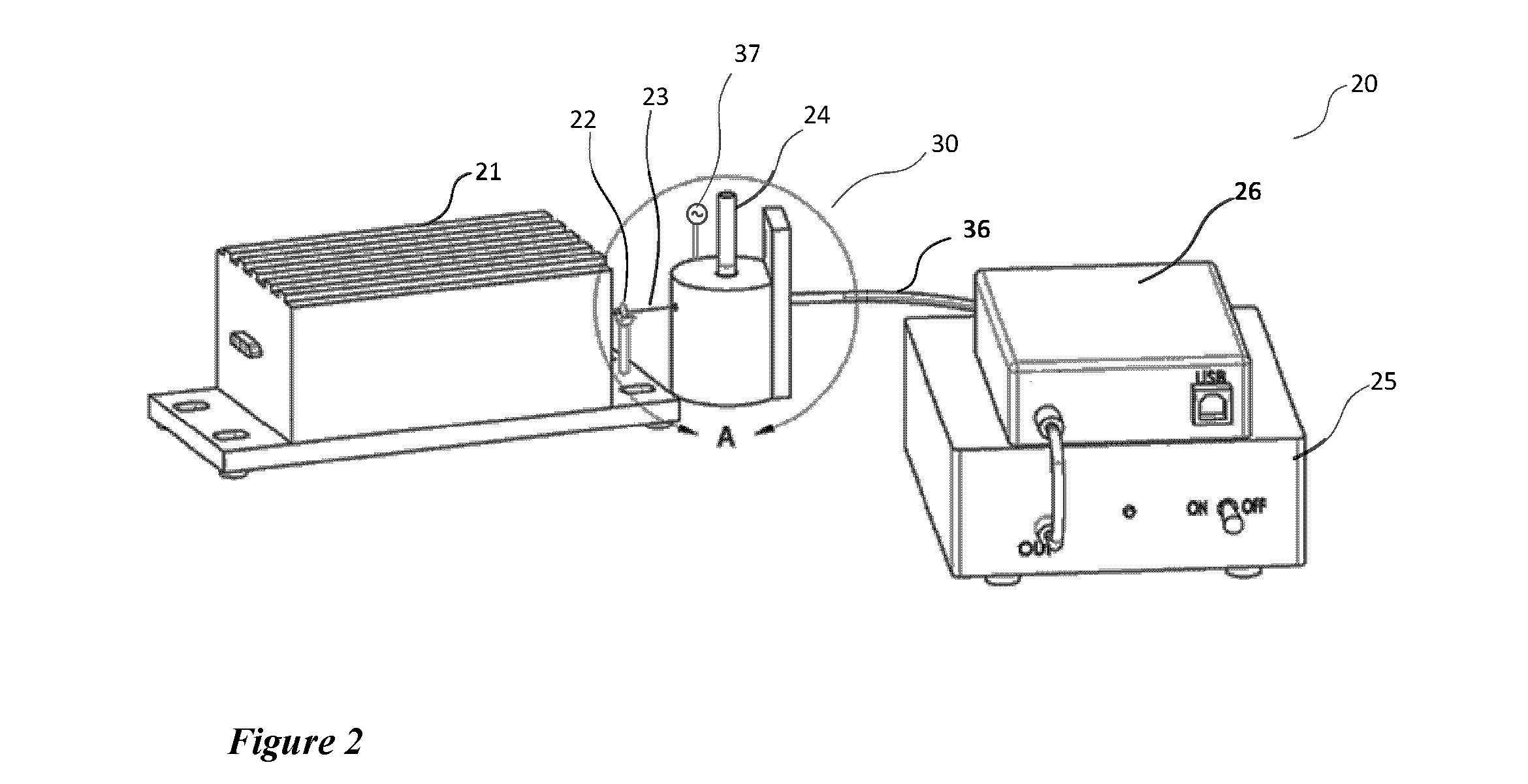Non-invasive reagentless glucose determination
a glucose measurement and non-invasive technology, applied in the field of medical parameters, can solve the problems of unable to use the ni glucose detection device usable by diabetics, unable to meet the needs of patients,
- Summary
- Abstract
- Description
- Claims
- Application Information
AI Technical Summary
Benefits of technology
Problems solved by technology
Method used
Image
Examples
example 1
[0120]An example that illustrates the use of the device in 0 and associated data analyses is presented in FIG. 8, as applied to a suspension of 1×10−6 gram / ml 4.1 microns latex particles. The particles were suspended in distilled water (conductivity˜30μ Semen / cm). Other parameters used: applied voltage: 40 V (nominal, peak-to-peak, as measured from the output of RF amplifier); frequency: 350 kHz; τ: 60 microseconds; and, θ=90°. For display, the normalized heterodyne autocorrelation functions were constructed from the correlator's raw data using the equation: C′norm(τ)=[(C′(τ)τ−C′(τ)τ=infinity] / C′(τ)τ=0−C′(τ)τ=infinity), where C′(τ)τ=0 is the value in the first channel of the correlator, and C(τ)τ=infinity is the value in the correlator's delay channel. In FIG. 8, is 66 is normalized C′(τ), and 65 is C(τ) per above description. C(τ) in this case was obtained from curve fitting of C′(τ) to an exponential function.
example 2
[0121]The data in Example 1 were further analyzed by extracting the oscillations due to the application of the field gradient per the analysis schemes of this invention. FIG. 9 shows the extracted oscillations. The oscillations 68 in FIG. 9 were calculated as [C′norm(τ)−1] to aid in the removal of spurious peaks in the FT. The FT showed a single peak, as expected. Improvements in the FT analysis may be accomplished by a weighting scheme, e.g., by dividing by the dampening factor C′(τ) as known in the art[36,37].
example 3
[0122]FIG. 10 shows the application of the device presented in FIG. 2 and the data analysis procedures of the present invention as applied to a yeast cell mixture, with separate measurements using frequencies of 300 kHz and 500 kHz. A sample of Baker's yeast (0.5 gram in 100 ml water) was suspended in water and centrifuged at 2000 g for 10 minutes. The supernatant was discarded and the pellet resuspended (by vortex) in 100 ml of water. The process was repeated once and the suspension was used in the measurements, with other conditions similar to those in FIGS. 8-9. The isolated oscillations were extracted, and the FT (velocity domain) spectra of the oscillations are displayed. Trace 75 represents the spectrum from the application of oscillating field gradient of 300 kHz, while trace 76 is the spectrum resulting from the application of 500 kHz. Peak positions can be seen to depend on the frequency employed.
[0123]Several descriptions, illustrations and examples have been presented to ...
PUM
 Login to View More
Login to View More Abstract
Description
Claims
Application Information
 Login to View More
Login to View More - R&D
- Intellectual Property
- Life Sciences
- Materials
- Tech Scout
- Unparalleled Data Quality
- Higher Quality Content
- 60% Fewer Hallucinations
Browse by: Latest US Patents, China's latest patents, Technical Efficacy Thesaurus, Application Domain, Technology Topic, Popular Technical Reports.
© 2025 PatSnap. All rights reserved.Legal|Privacy policy|Modern Slavery Act Transparency Statement|Sitemap|About US| Contact US: help@patsnap.com



